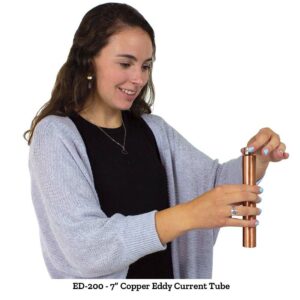 by Janice VanCleave
by Janice VanCleave
I love the magnetic accelerator. In fact, I met friends at a restaurant yesterday and took the accelerator with me. We had a lot of fun predicting what would happen and testing our predictions. No formal steps….just making cool guesses and then discovering whether we were correct.
Yes! The steel ball shot off the end of the track and hit the floor a couple of times, but that just added to the excitement. It’s a small town and few are surprised that the eccentric science author is experimenting at the restaurant–again!
A parent came in with her daughter, a second grader. With the mother’s permission I invited the child to sit with us. The girl had sinus problems and didn’t feel well. She was a bit sluggish and her eyes looked dull, as one would expect. When I asked the child if she wanted to do some science experiments, her dull eyes brightened. She had not been present during the previous testing of the accelerator, but she was immediately interested.




 Posted by Tami O'Connor
Posted by Tami O'Connor 


 by: Norm Barstow
by: Norm Barstow